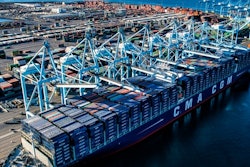
Changes in the ITS Logistics US Port/Rail Ramp Freight Index, presented by ITS Logistics, reflect the temporary agreement made between terminal operators and union officials to reopen port operations on the U.S. East and Gulf Coasts. Ocean container rail traffic off the U.S. West Coast also continues to be problematic as the rail infrastructure cannot keep up with additional volumes coming into Seattle and Los Angeles.
“Container traffic entering the West Coast is still challenged today and experiencing volumes booked to avoid the Red Sea issues and East/Gulf labor union activity, which continues to test capacity in those markets,” says Paul Brashier, VP of global supply chain for ITS Logistics. “This, coupled with the recent strike in Vancouver, will challenge U.S. West Coast operations as shippers find safe harbor here. This should continue into December.”
Key takeaways:
- U.S. East and Gulf port demand increased drastically as operations reopened post-strike in October and have since moderated. Last month, thousands of dockworkers returned to work after reaching a tentative wage agreement between the United States Maritime Alliance (USMX) and the International Longshoremen’s Association (ILA).
- While ramp operations throughout the U.S. rail infrastructure are running smoothly, the additional dwell time at U.S. entry, coupled with earlier issues pertaining to getting capacity at origin in Asia, is forcing many companies to dray-off and transload. Companies are also prioritizing sending truck goods further east one-way into their supply chains, driving domestic truckload rates up out of the West Coast. This is all occurring as the nation prepares for the recently elected Trump Administration to come into effect.
“We now must focus attention to how potential tariffs proposed by the newly elected Trump Administration could impact supply chains, shipping costs, and overall trade dynamics in the months ahead,” adds Brashier. “In late 2018, tariffs implemented by the Trump Administration caused a significant amount of vessel and container diversions, congestion, and overall supply chain headwinds that, at the time, led to the most significant challenges ever to North American supply chains. Shippers moved billions of dollars in goods to get ahead of those tariffs.”




















